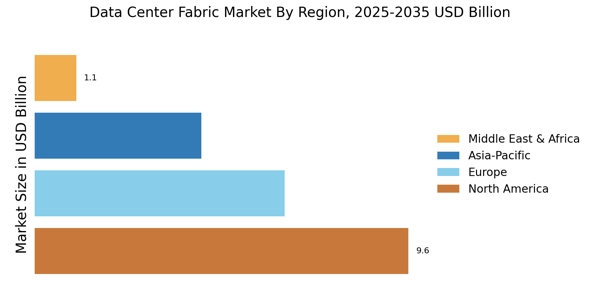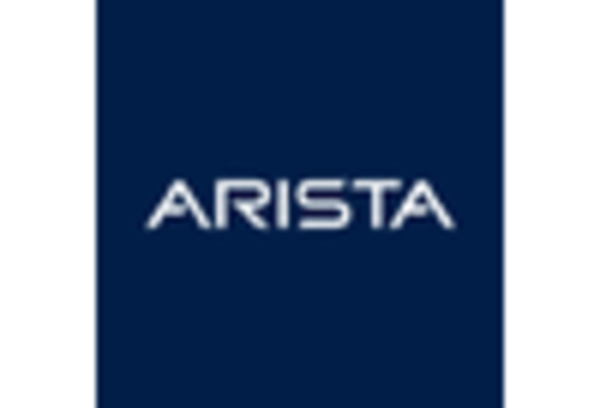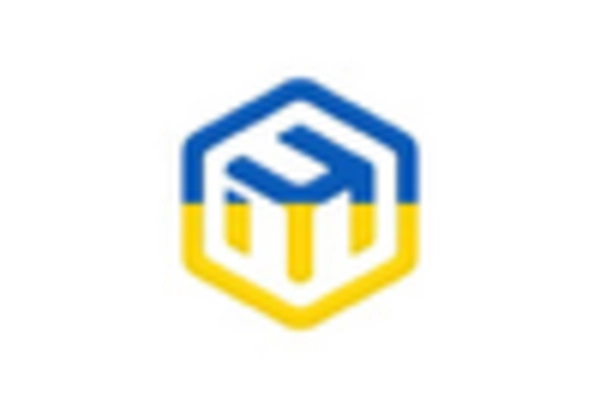Expansion of Edge Computing
The Data Center Fabric Market is poised for growth due to the expansion of edge computing. As organizations seek to process data closer to the source, the need for robust data center fabrics that support distributed architectures becomes increasingly critical. This shift is driven by the proliferation of IoT devices and the necessity for real-time data processing. The edge computing market is projected to grow at a compound annual growth rate of 30% through 2025, indicating a substantial opportunity for the Data Center Fabric Market. By enabling efficient data routing and management at the edge, data center fabrics play a vital role in supporting this transformative trend.
Increased Focus on Data Security
In the current landscape, the Data Center Fabric Market is witnessing an increased focus on data security. As cyber threats become more sophisticated, organizations are prioritizing the implementation of secure data center fabrics that can safeguard sensitive information. This trend is reflected in the growing investment in cybersecurity solutions, which is expected to exceed USD 300 billion by 2024. Data center fabrics that incorporate advanced security features, such as micro-segmentation and encryption, are becoming essential for organizations aiming to protect their data assets. Thus, the Data Center Fabric Market is likely to see a rise in demand for secure networking solutions that address these security concerns.
Rising Demand for High-Speed Connectivity
The Data Center Fabric Market is experiencing a notable surge in demand for high-speed connectivity solutions. As organizations increasingly rely on data-intensive applications, the need for rapid data transfer and low latency becomes paramount. This trend is underscored by the projected growth of the data center market, which is expected to reach USD 200 billion by 2026. Enhanced connectivity solutions, such as Ethernet fabrics, are being adopted to meet these requirements, facilitating seamless communication between servers and storage systems. Consequently, the Data Center Fabric Market is likely to benefit from this heightened demand, as businesses seek to optimize their network performance and ensure efficient data handling.
Growing Need for Scalability and Flexibility
The Data Center Fabric Market is driven by the growing need for scalability and flexibility in data center operations. As businesses expand and evolve, their data center infrastructures must adapt to changing demands. This need is reflected in the increasing adoption of modular data center designs, which allow for easy scaling of resources. The market for modular data centers is expected to grow significantly, with projections indicating a value of USD 50 billion by 2025. Data center fabrics that support scalable architectures enable organizations to efficiently manage their resources, ensuring that they can respond swiftly to market changes. Thus, the Data Center Fabric Market is likely to thrive as organizations prioritize adaptable solutions.
Adoption of Software-Defined Networking (SDN)
The Data Center Fabric Market is significantly influenced by the adoption of Software-Defined Networking (SDN). This technology allows for greater flexibility and automation in managing network resources, which is increasingly appealing to organizations seeking to enhance operational efficiency. The SDN market is projected to grow at a CAGR of 25% through 2025, indicating a robust demand for solutions that facilitate dynamic network management. By integrating SDN with data center fabrics, organizations can achieve improved scalability and resource allocation, thereby optimizing their data center operations. Consequently, the Data Center Fabric Market stands to gain from this technological advancement.


















Leave a Comment